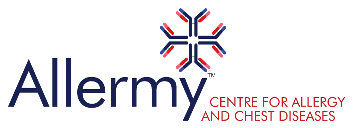SERVICES
LUNGS FUNCTION TEST

When patients have respiratory problems such as cough, breathing difficulty, wheeze, chest discomfort or pain or tightness in the chest, nasal allergic symptoms etc., the doctor will examine the chest and if a suspicion of the disease is there, will order a lung function test.
The test requires the patient to blow through a mouthpiece after taking a deep breath. This BLOWING should be forceful, continuous and as long as the patient can do without the interruption of coughing or taking a breath.
The result will show a graphic display of inspiration and expiration. It will also give the detail lung values.
As a result we can diagnose or confirm our clinical impression. Broadly we classify them as obstructive or restrictive disorders. Some examples are Asthma, COPD, bronchiectasis and interstitial lung disease wherein the tissues between the airspaces is damaged. The lung function test also helps to find out the response to treatment by doing the test before and after treatment.
SKIN PRICK TEST
Skin prick test is a simple easy and cost effective method of finding out to which aeroallergens and food allergens a person may be having an allergy. It is also more reliable and sensitive than the alternative blood tests. It can be done at any age. There is no bleeding, pain or any adverse reaction. The allergist Dr Arif Ahmed always does it at our center. Circles are drawn on the forearm about 20 to 25 after a detailed allergy history. The allergens or the substance to which s person is allergic is placed in this circle. This is than ‘scratched’ or pricked with a lancet. We than wait for 20 minutes. If there are swelling/indurations of more than 3mm size, we consider it positive if all other criteria are being met. The patient should not take any anti allergic like antihistamine on in the last 7 days prior to the test

ORAL FOOD CHALLENGE

Food allergy should be suspected when:
- There are persisting or intermittent symptoms without any other known reason, especially with concurrent atopic(allergic) symptoms
- Persons experiencing allergic symptoms (itch, angioedema, urticaria, wheezing & GI responses) in association with food exposure
- Persons who have limited their diet based on perceived adverse reactions to foods/additive. 20% of individuals in the population believe they have adverse reaction to foods. Not all these reactions are food allergies.
These patient’s are first subjected to a skin prick test .If the test is negative than we can safely say the person has no allergies to the substance tested.
If positive than there is only a 50% chance of allergy to the positive test.
This is further confirmed by an oral Food Challenge. In this the patient in a hospital setting is given increasing amount of the food substance starting from a finger tip amount to a full mouth full over a period of two hours. During this period we watch for any untoward reaction.
If any of the above mentioned allergic symptoms are observed, the patient is confirmed to have the particular Food allergy.
MANAGING ALLERGY
Allergy is basically managed by first identifying the incriminating or the causative ALLERGEN which is always a living or a protein molecule. Irritant substances like smoke and perfumes are chemical substances and as such do not have any long term impact.
It is essential first to identify the allergens with history, skin prick test or a blood test. Control of the allergens in environment will improve the disease by 40% and if it is food by 100%.
Newer drugs in newer delivery devices are available to bring maximum control with minimal side effects. A clear knowledge of the technique to use them is very essential for successful management

